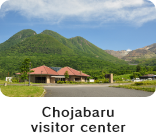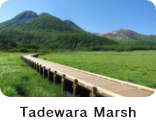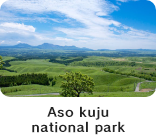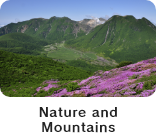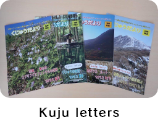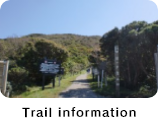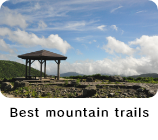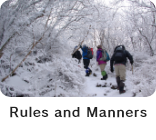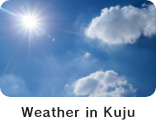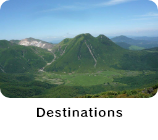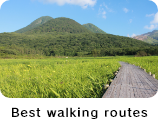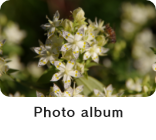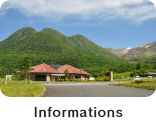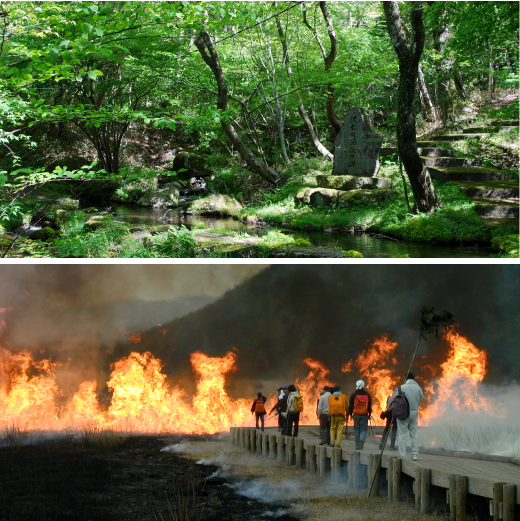

In March, Mansaku (Hanamelis japonica) begin blooming in Kuju mountains, and various early-spring wildflowers are blooming in the forests of deciduous broad-leaved trees. Grasslands in Kuju, however, turn black every spring. It is because the local people burn the dead grasses so that they can maintain the grasslands. Although the grounds turn completely black after being burnt, before long Kisumire (Viola orientalis) or Sakurasou (Primula sieboldii) begin blooming to color the black grounds. In May, the grounds are covered with fresh green again, with many creatures bustling about vividly.

In early summer, Miyamakirishima (Rhododendron kiusianu), begin blooming and paint the mountains pink. Many people from all over the world come to Kuju to see this unique scenery. In the marshlands, many flowers such as Kisuge (Hemerocallis vespertina) and Nohanashobu (Iris ensata var. spontanea) bloom. Higotai (Echinops setifer), which is a blue round flower, also add colors to the grasslands. Many creatures, colorful flowers, and fresh greens are busy to brighten up the short summer in the highland.
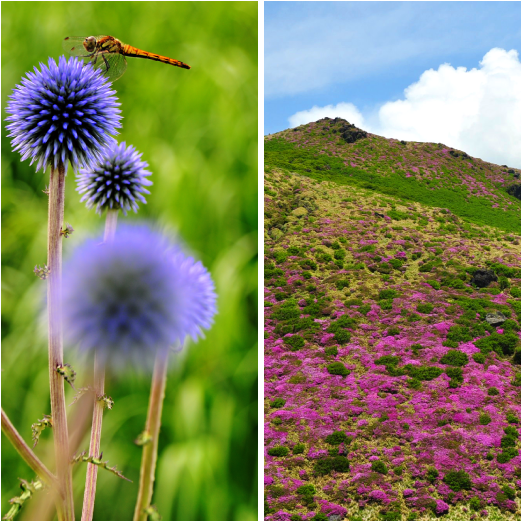
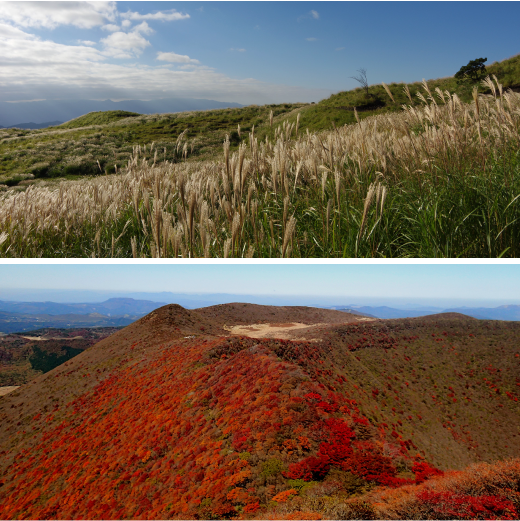

In September, autumn flowers like Shirahigeso (Parnassia foliosa var. nummularia), Akebonoso (Swertia bimaculata), and Waremokou (Sanguisorba officinalis) begin blooming one after another in the grasslands, letting us know autumn has come. In the middle of October, the leaves on the trees around the top of the mountains start changing their colors into red, yellow, and golden brown. Gradually, the autumn leaves color the mountains from the top to the bottom. The first snow falls on the mountains in November. The season changes from autumn into winter quietly and slowly…

Though Kyushu is the southern-most main island of Japan, the winter in Kuju is unbelievably cold. In Bogatsuru, the temperature sometimes falls down to -20 degrees. Miike pond, which is just below the peak of Mt. Nakadake, is frozen and you can walk across on the ice. Kurasame Fall also becomes icy. In the highlands, the snow lies as deep as more than 50cm. On the snowy ground in Tadewara, you can find the footprints of a fox, a hare, and a marten. With them you can feel the breath of creatures even in the silence and stillness of the snowy field.
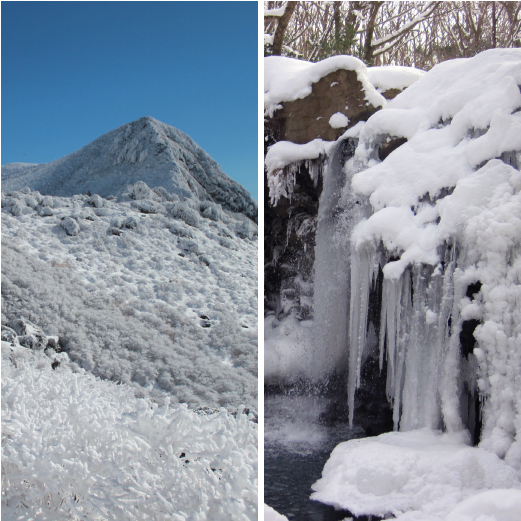
Introducing the spots to experience the nature in Kuju
-

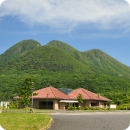
Chojabaru Visitor Center
-

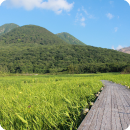
Tadewara Marsh
-

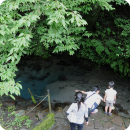
Oike Pond Park
-

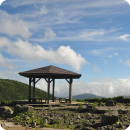
Makinoto Pass
-

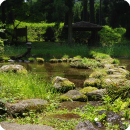
Noike Park
-

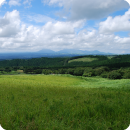
Somi Camp site
-

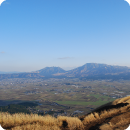
Daikanbo Viewpoint
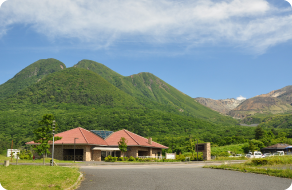

A museum facility where you can learn about Kuju
This is a museum introducing the nature in Aso-Kuju National Park. It has many display articles about the nature and culture in Kuju. The short films about Kuju also let you feel the nature here. In this center, you can get information about mountains and seasonal nature. There is a space you can take a rest and relax yourself.
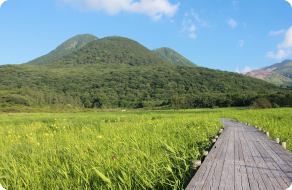

A precious marsh which is registered under the Ramsar Convention
In Tadewara Marsh, you can see beautiful sceneries, local animals and plants which change according to the season. The wooden paths are built through the marsh and you can casually walk around it within 20 – 60minutes ( the required time differs depending on the course you choose). Some part of the path is accessible for a wheelchair. Chojabaru Visitor Center is located just in front this marsh.
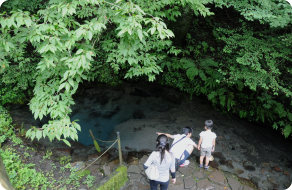

This area is located at the foot of Mt.Kurodake, where the primeval forests still remain and clear spring water comes out. This natural spring is selected as one of “the 100 selected Great Water Sources in Japan”. Anyone who visits Oike can drink freely this famous water. A walking path is arranged through Oike pond park. You can follow the path and go into the forest to reach Meisui Fall.


This Pass is the highest point along Yamanami Highway, at an elevation of 1,330m. It has a trailhead leading to Mt.Kuju or Mt. Nakadake, from which many hikers head for their destinations. About 10-minute walk up on the steep paved slope takes you to a lookout, where you can see whole Handa plateau below your eyes.
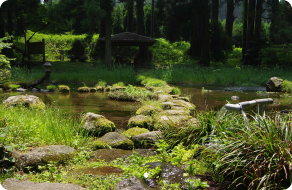

A park selected as one of “the places of Scenic Beauty in Oita prefecture”.
In 1873, this park was designated as one of the modern parks as well as Arashiyama in Kyoto. It is also selected as one of “the places of Scenic Beauty in Oita prefecture”. In this park, there are some large cedar trees and a natural spring. You can enjoy walking in a calm and relaxing atmosphere of this Japanese-style garden.
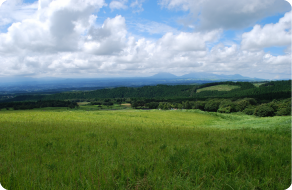

A pleasant camp site with the grasslands, the woods, and a clear stream.
This camp site is located at the elevation of 850m in the food of the Kuju Range. Since this area is cool even in mid-summer, it is an ideal place to enjoy camping.
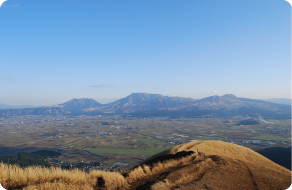

A scenic place you can look around both the Kuju range and Aso five mountains
Daikanbo Viewpoint is a scenic spot named by a great Japanese writer, Sobo Tokutomi. Aso five mountains seen from this place is called “Aso Nehan-zo” (an image of the Buddha immediately after his death). Early in the morning, sea clouds cover Aso valleys creating a mysterious scenery. The Kuju Range can be seen from the southern side of this point.


渓谷沿いの道や林間、飯田高原の雄大な草原を歩くコース
九重“夢”大吊橋から長者原までを結ぶ、全長12.2kmのオルレコース。青と赤の矢印を目印にして歩きながら、渓谷沿いの道や林間、飯田高原の雄大な草原を体感できます。

Contact List
Information about national park and mountain hiking
| Chojabaru Visitor Center | 0973-79-2154 |
|---|
Tourist information office in Kuju Region(tourist facilities・accommodations)
| Kokonoe-machi tourism association | 0973-73-5505 |
|---|---|
| Kuju・Handa Plateau tourism association | 0973-79-2381 |
| Taketa city tourism association (Kuju Plateau tourism information) | 0974-76-1610 |
Public transportation
| Bus | |||
| Bus | Kokonoe Town Community Bus | 0973-76-3807 | |
| Kamenoi Bus | 0977-23-0141 | ||
| Kyusyu Odan Bus (Sanko bus service center) | 096-325-0100 | ||
| Kyusyu Odan Bus (reservation center) | 096-354-4845 | ||
| taxi | |||
| taxi | Hato Taxi (Kokonoe town, Sujiyu hot spring) | 0973-79-2510 | |
| Miyama Taxi (Kokonoe town) | 0973-76-2121 | ||
| Kuju Kanko Taxi (Kuju Plateau) | 0974-76-1101 | ||
| Taketa Godo Taxi (Kuju Plateau) | 0974-76-0071 | ||
| JR | |||
| JR | Bungo Nakamura Station (JR Kyudai line) | 0973-77-6824 | |
| Bungo Taketa station (JR Hohi line) | 0974-62-2318 | ||
| Yufuin Station (JR Kyudai line) | 0977-84-2021 | ||
| Miyaji Station (JR Hohi line) | 0967-22-0071 | ||
Public institution
| Police | Chojabaru residential police box | 0973-79-2352 | |
| Kusu Police Station (Chojabaru / Makinoto / Yoshibu trailhead) | 0973-72-2131 | ||
| Taketa Police station (Akagawa / Minami / Soumi / Gakurokuji trailhead) | 0974-63-2131 | ||
| Oita Minami Police Station (Shiramizu Kosen / Oike trailhead) | 097-542-2131 | ||
| Administration | Ministry of Environment (Kuju Administrator Office) | 0973-79-2631 | |
| Kokonoe Town Office (Commerce, industry, tourism, nature environment department) | 0973-76-3150 | ||
| Taketa City Kuju Branch (Community Promotion Section) | 0974-76-1111 | ||

